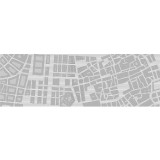Supervisor:
2017
The urban block, as a structural component for the organization of the city, is formed and modified along each historical, social and economical conditions. The evolutionary process is a historical narrative of all those attemps that were made in order to give an answer to the crisis ofthe city. The redesign of Paris from Baron Haussmann and the urban expansion of Barcelona from Ildefons Cerda were two very characteristic urban approaches that were about to answer the crisis of the city in the mid-19th century that came up due to the Industrial Revolution. The dense and large urban blocks of Paris and the unsuccessful attempt of Cerda for a different typological arrangement of the urban blocks was a result of private land speculation. At the beginning of 20th century the Modern Movement made an attempt to give the first substancial answers to the continuous urbanization and to the poverty in which the majority of the population had fallen into. The strictly standarized working class districts of Ernst May in Frankfurt as well as the large perimeter estates in Red Vienna during the Interwar pioneered the transition to the Modern City, where the housing question is of vital importance and the state intervention became an integral tool. In the postwar years, Le Corbusier's urban principles dominated in european level in an attempt to rebuild the devastated european metropolises. The traditional urban block had been totally decomposed and the urban design had been condensed to a single building, to a vertical urban block. It was not until the early 1970s where the first severe criticism to the urban language of Modernism, with main spokesmen Aldo Rossi and Leon Krier, indicated the necessity of returning to the urban block, as the main design scale. The city is dealt as a collage where different layers of history are met. Therefore, the various types of urban blocks are becoming memorylandmarks. Their footprints are deeply engraved into the urban tissue of the city, revealing city's ever-changing image, city's history.
